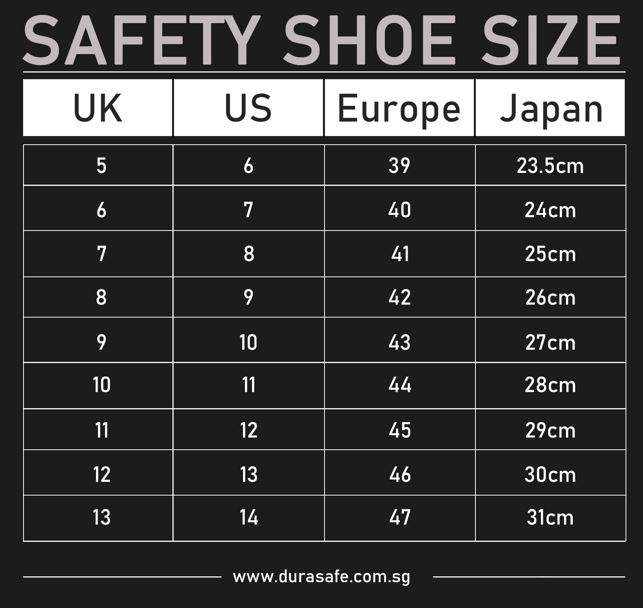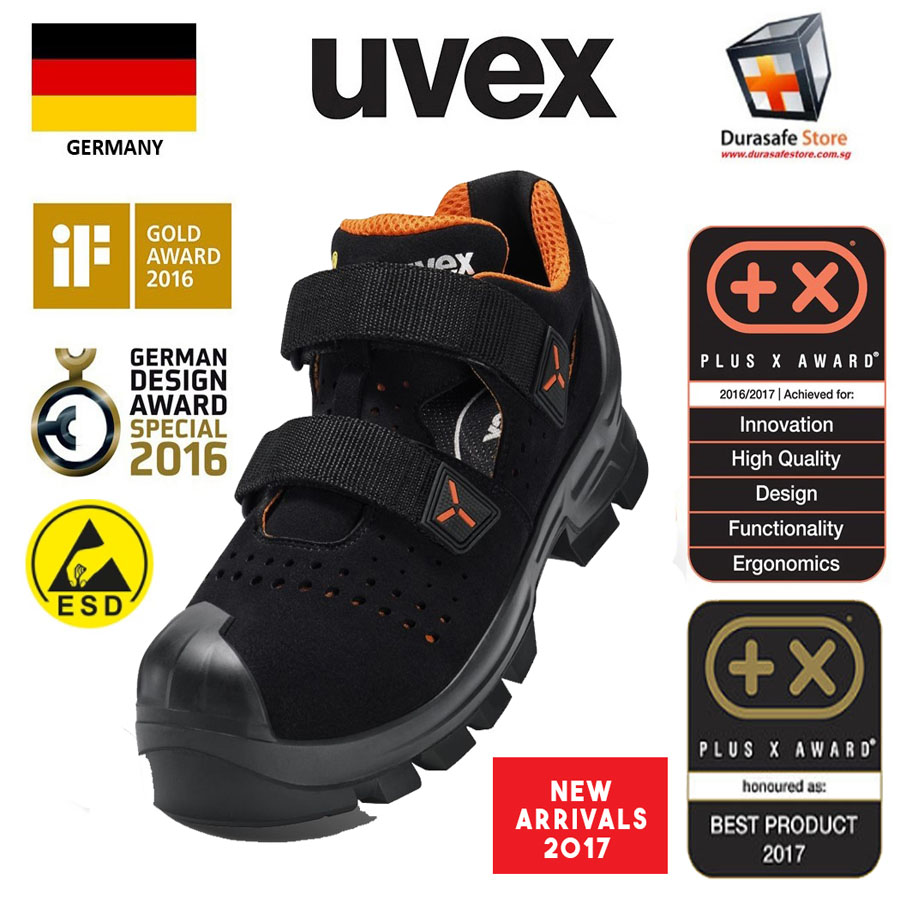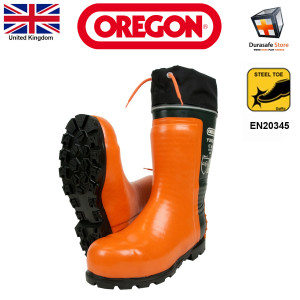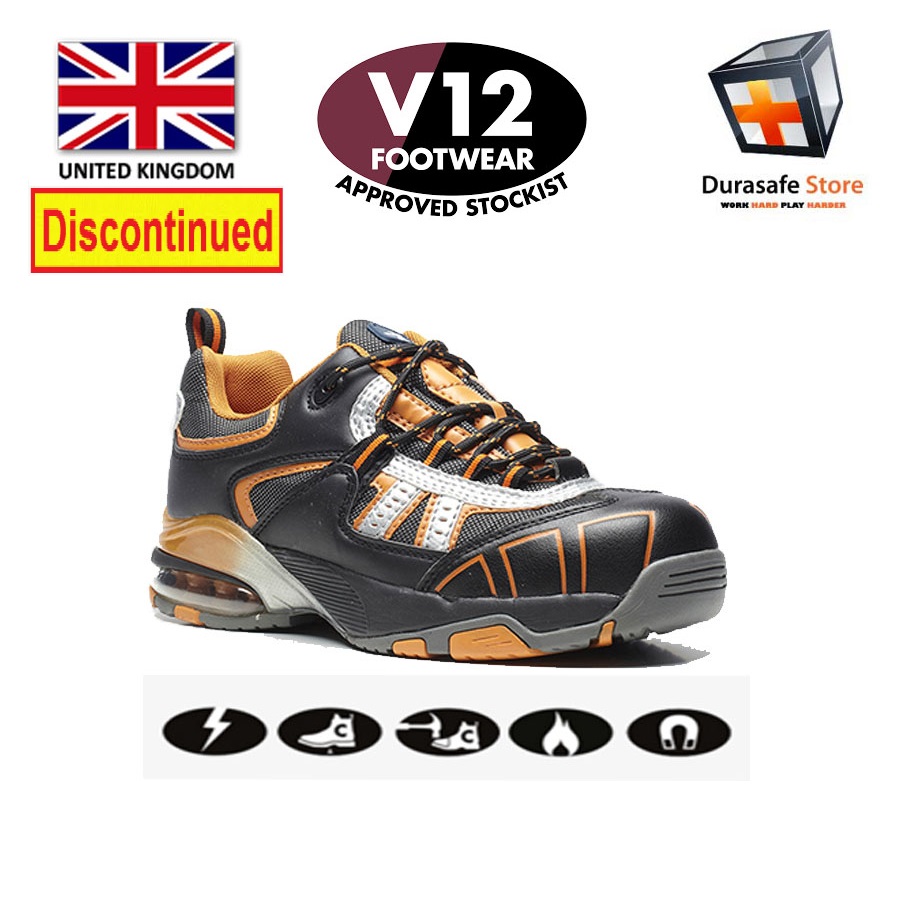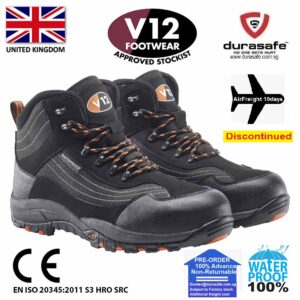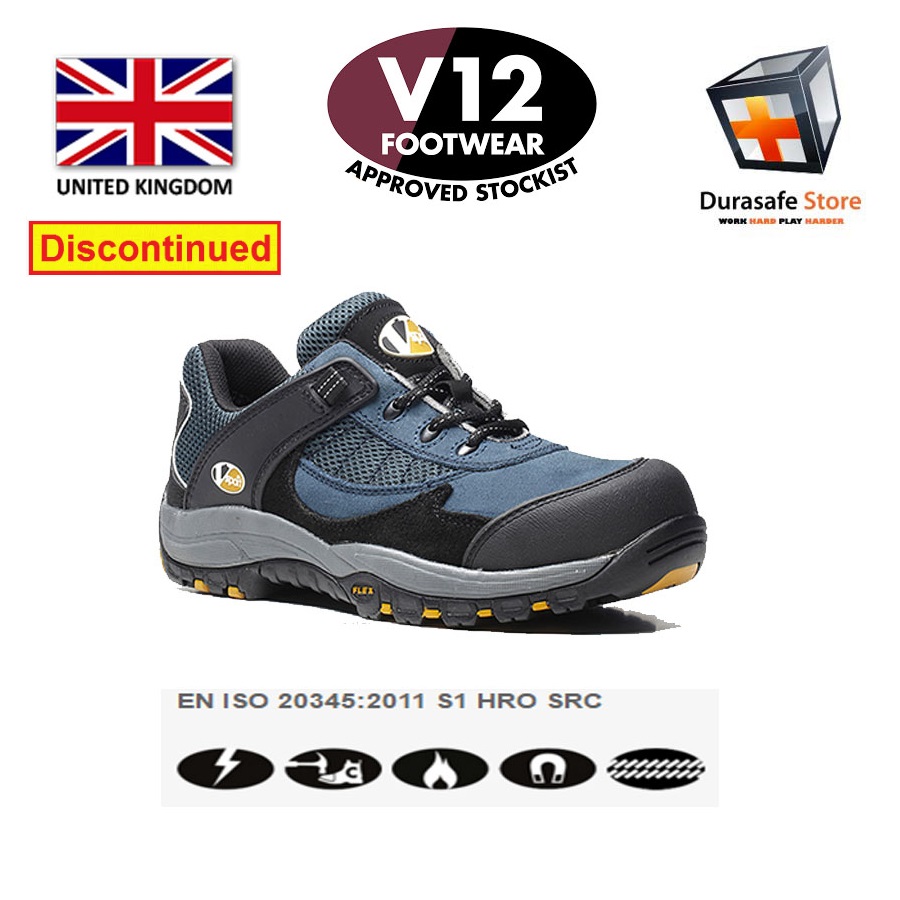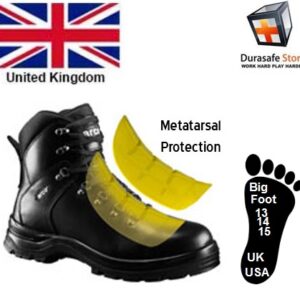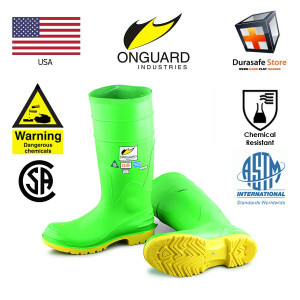PRODUCTS ARE AVAILABLE AT DURASAFE INTERNATIONAL STORES IN SINGAPORE | VIETNAM | THAILAND | INDONESIA | CHINA | PHILIPPINES | MALAYSIA | HONG KONG | TAIWAN
ARMOUR X3 9-Inch Speed Dial S3 SRC Composite Toe Cap Safety Boot Kevlar Midsole Black Size UK 5 to 13






ARMOUR X3 9-Inch Speed Dial S3 SRC Composite Toe Cap Safety Boot Kevlar Midsole Black Size UK 5 to 13
0₫
- Mô tả
- Thông tin bổ sung
- How to care for your safety shoes?
- SIZING CHARTS
- Understanding the basics of a safety footwear
- The common types of outsoles constructions methods/bonding used for safety footwear
- Understanding Footwear Markings
Armour X3 features an easy on and off size zip to keep you comfortable on your feet.
• Lightweight
• Composite Toe Cap
• Kevlar Midsole for Puncture Resistance
• Scuff Cap to protect the outer material on the toecap from scuffing
• Thick perforated insole for increased comfort
• Breathable Lining
• Reflective stripes for night visibility
• Slip resistant PU/TPU sole
• 200 Joules composite toe cap protection
• Anti-Static
• Shock-Absorbing Heel
• Side zip for easy slipping on and off
• Kick Plate to protect the shoe when taking the footwear off and for easy removal
• Water Resistant
• ISO EN 20345:2011 SRC
| Price | All, $26 to $50 |
|---|---|
| Applications | Footwear |
| Size | 5, 6, 7, 8, 9, 10, 11, 12, 13 |
How to care for your safety shoes?
Inspect regularly for damage
Safety footwear is designed and made to withstand the toughest work conditions. However, regular inspection on safety footwear is necessary to ensure that the safety footwear is in the perfect condition to serve its purpose.
Rinse with water after exposure to chemicals
Regular cleaning and conditioning protect safety footwear from harsh weather and worksite conditions. For example, cements tend to dry up leather, causing cracks in the leather upper. A rinse at the end of the workday will enhance the durability of the footwear.
Always air and dry footwear after each day use
Remove the insoles. Remove laces or open fully. Place in a dry area. If water went over the top of your footwear or if they contain excess moisture inside, pat dry with paper towels or other absorbent material, then leave it inside the boot or shoe for 30 minutes. Remove and air dry as mentioned. Store footwear in a cool, dry place. Anti-static properties are greatly reduced by wet conditions and with wear.
A six months warranty against manufacturing defects is provided upon landing of shoes at destination
Avoid direct exposure to sunlight unless in use. Keeping the shoes in a humid environment will reduce the work life of the shoes.
Always air and dry footwear after each day use
A manufacturing month and year label is sewn on the inside of the tongue of shoes.
Safety protective footwear is not meant for prolonged usage in wet environments
Safety footwear is constructed using a heat injection molding process.
Injection molded: outsoles start as a soft plastic substance that is poured into a sole-shaped metal mold. The shoe’s upper is pressed down against the mold. The soling material quickly hardens and is molded in a permanent bond to the upper.
Therefore, prolonged exposure or submerged to liquids would cause damage to the bond of the upper and lower sole in turn creating a crack on the joints.
Water boots, Wellingtons or commonly known as PVC boots with steel toe cap & steel mid plate are recommended to use in wet environments.
SIZING CHARTS
Understanding the basics of a safety footwear
The most common types of outsoles used for safety footwear are:
PU MONO (SINGLE) DENSITY:
It is a material with a substantial weight and a good comfort reaction. It has a good resistance to a few chemical agents and oils, but no resistance to the strong acids. The resistance to the temperatures goes from -10/-20 to +130 max 140 degrees. The softness gives a good grip to this material giving it a slip resistance similar to TPU and rubber.
Recommended usage: Indoor and not very aggressive work places.
PU/PU:
It is a double density profile sole made of PU. It has a good resistance to few chemical agents and oils, but no resistance to the strong acids. The resistance to the temperatures goes from -10/20 to 120 max 150 degrees. The dual density PU midsole provides good impact absorption and wearing lightweight comfort.
Recommended usage: Indoor and outdoot, not really for contacts with chemical agents, acids and water.
PU/TPU:
It is a particularly sturdy, abrasion-resistant and flexible. TPU provides higher performances: abrasion resistance, slip resistance at a very good level and also similar to single density PU and rubber, flexibility. On the average usage, it is mroe durable than PU and it has a higher resistance to low temperature from -5 up to -20 degrees. Not very resistant to high temperatures: maximum 100 degrees.
Recommended usage: Indoor and outdoor, cold weather, not really suggested for contacts with hot surfaces.
MONO DENSITY RUBBER:
Exceptionally sturdy: temperature-resistant from -30 up to 300 degrees, hard to penetrate for sharp objects and resistant to fuels, oils, microbes and numerous chemicals. However, rubber is much heavier than PU and TPU, and is less flexible when subjected to cold temperatues. The rubber outsoles are also known for the great slip resistance similar as single density PU and TPU.
Recommended usage: indoor and outdoor, in contact with oils, chemicals, acids. If HRO certified, it is also recommended for contacts with hot surfaces. It is a compact and heavy material hence it is not the best choice against foot fatigue.
Recommended usage: indoor and outdoor, cold weather, not really suggested for contacts with hot surfaces.
The common types of outsoles constructions methods/bonding used for safety footwear
The common types of outsoles constructions methods/bonding used for safety footwear are:
Goodyear Welt
Using an insole with a wall or rib that is positioned closed to the edge of the insole. During lasting, the upper is secured to this wall. Sole is then positioned with adhesive to the shoe outsole and is stitched through the welt base. This is the most traditional and labour intensive with the highest price point to the end users.
Recommended usage: Typically wet and higher temperature environments, volatile environments. Such as Oil and Gas, Offshore, Oil Drilling, etc.
Cemented Bonding
In this process the upper and the sole are glued together. In this case, the sole is fabricated first, with a separate machine. Once a boot’s upper is shaped and completed, the sole is attached with an adhesice. This is the fastest method with least production time.
Recommended usage: Environments with flat surfaces, such as assembly lkines, manufacturing jobs, warehouses, and roofing and srveice applications as well as jobs where the majority of the time is spent standing or kneeling.
Injection Molding
Injection of polyurethane, in which the sole of polyurethane is created and directly attached to the upper. The upper is placed into a mold (normally made of aluminium or Teflon), then polyurethane is injected into the mold, and when cools it becomes solid and sticks to the upper. This process fixes together the upper and the sole very firmly.
Recommended usage: Various types of working environments for the masses. Such as constructions, engineering, logistics, F&B, Service Line, Shipping, ShipBuilding, as well as jobs where the staff are numerous.






